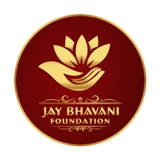Registered by NITI Aayog, Government of India
Regi. No. F/4558/MAHESANA || GUJ/4573/MAHESANA
Call Us : (+91) 8200972623
🌺 Jay Bhavani Foundation
Serving with Faith, Strength & Humanity
Join us in building a compassionate society through education, healthcare, and community service.
About Us
Gujarati: જય ભવાણી ફાઉન્ડેશન એ એક ચેરિટેબલ ટ્રસ્ટ છે જે સમાજ સેવા અને શિક્ષણ, આરોગ્ય ક્ષેત્રમાં કાર્યરત છે.
English: Jay Bhavani Foundation is a registered charitable trust serving society through education, healthcare, and community service, guided by Mata Bhavani.
What We Do
| Icon | Gujarati | English |
|---|---|---|
| 🎓 | શિક્ષણ સહાય | Educational Support |
| 🏥 | આરોગ્ય કેમ્પ | Health Camps |
| 🍲 | ભોજન વિતરણ | Food Distribution |
| 👵 | વૃદ્ધ આશ્રમ | Elder Care |
| 👩 | મહિલા તાલીમ | Women Empowerment |
| 👨🎓 | માર્ગદર્શન | Youth Skill Training |
Support Us
All donations are tax-exempt under Section 80G. Your support empowers our mission.
Gallery Preview
Photos of events, health camps, food drives, and Bhavani Mata temple activities.
View Full GalleryContact Us
Address: Mehsana, Gujarat
Phone: +91-XXXXXXXXXX
Email: info@jaybhavanifoundation.org
